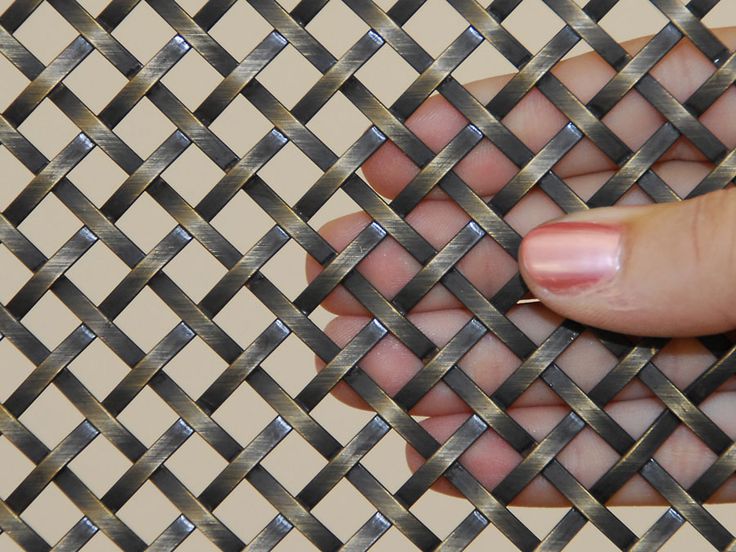
Steel Mesh Sheets: Alternatives & Factors to Consider
Steel mesh sheets are widely used in various industries and applications due to their strength, durability, and versatility. From construction and infrastructure projects to industrial manufacturing and DIY projects, steel mesh sheets play a crucial role in providing structural support, reinforcement, and security. However, as with any material, cost considerations are important. This article explores the question: “Is there a cheaper alternative to steel mesh sheets?” We will delve into potential alternatives and their benefits, addressing the cost factor without compromising quality and performance.
Introduction:
Steel mesh sheets have become an integral part of numerous industries and projects due to their exceptional strength, reliability, and flexibility. They are commonly used for reinforcing concrete structures, providing security barriers, and supporting various construction and manufacturing applications. While steel mesh sheets offer unmatched performance, many individuals and organizations are in search of cost-effective alternatives. In this article, we will explore alternative materials that can potentially replace steel mesh sheets while meeting specific project requirements and budgetary constraints.
The Importance of Steel Mesh Sheets
Before we delve into alternative options, it’s crucial to understand why steel mesh sheets are widely used and highly regarded. These sheets consist of interconnected steel wires or bars arranged in a grid pattern. This design enhances the load-bearing capacity of structures, prevents cracking and shifting, and ensures durability. Stainless steel mesh sheet are crucial for projects such as building foundations, retaining walls, bridges, and flooring systems, as they add strength and stability to these structures.
Cost Considerations in Choosing Steel Mesh Sheets:
While the benefits of steel mesh sheets are undeniable, cost plays a significant role in decision-making for many projects. Steel, as a raw material, can be relatively expensive, leading individuals and organizations to explore more economical alternatives. It’s essential to strike a balance between cost and quality to ensure optimal project outcomes. Fortunately, there are several alternative materials that offer cost savings without compromising performance.
Exploring Alternative Materials:
- Fiber-Reinforced Polymer (FRP) Mesh Sheets: FRP mesh sheets consist of high-strength fibers embedded in a polymer matrix. These materials provide excellent corrosion resistance, high tensile strength, and durability. FRP mesh sheets are lightweight, making them easier to handle and install. They are commonly used in applications where corrosion resistance is essential, such as coastal structures, wastewater treatment plants, and chemical storage facilities.
- Welded Wire Mesh Sheets: Welded wire mesh sheets are made by welding intersecting steel wires together. They offer good strength, stability, and flexibility. Welded wire mesh sheets are commonly used in fencing, animal enclosures, and concrete reinforcement applications. They are cost-effective and readily available in various sizes and configurations.
- Expanded Metal Mesh Sheets: Expanded metal mesh sheets are produced by slitting and stretching metal sheets, creating a pattern of interconnected diamond-shaped openings. These sheets are lightweight, yet they provide structural integrity and good visibility. Expanded metal mesh sheets are often used in architectural applications, walkways, safety barriers, and machine guards.
- Plastic Mesh Sheets: Plastic mesh sheets are made from high-density polyethylene (HDPE) or polypropylene (PP). They offer excellent corrosion resistance, low maintenance requirements, and versatility. Plastic mesh sheets are commonly used in gardening, packaging, filtration, and lightweight structural applications.
Evaluating the Cost-Effectiveness of Alternatives: When considering alternative materials, it’s essential to evaluate their cost-effectiveness in the context of the project’s requirements. Factors such as material cost, installation costs, lifespan, maintenance needs, and long-term durability should be considered. While some alternatives may have lower upfront costs, they might require more frequent replacements or have limitations in specific applications. Assessing the overall cost-benefit ratio ensures that the chosen alternative provides value without compromising the project’s integrity.
Factors to Consider When Choosing an Alternative:
- Strength and Durability: Ensure that the alternative material possesses sufficient strength and durability to withstand the intended application. Consider factors like load-bearing capacity, tensile strength, and resistance to environmental conditions.
- Application-Specific Requirements: Different projects have specific requirements. Consider factors such as corrosion resistance, fire resistance, electrical conductivity, and dimensional stability when choosing an alternative material.
- Long-Term Maintenance and Replacement Costs: Assess the maintenance needs and potential replacement costs of the alternative material over its lifespan. Balancing upfront savings with long-term expenses is crucial for cost-effectiveness.
Conclusion:
In conclusion, ss mesh sheet is widely used for their strength and reliability, but cost considerations often lead to exploring alternatives. Fiber-reinforced polymer (FRP) ss mesh sheets, welded wire mesh sheets, expanded metal mesh sheets, and plastic mesh sheets offer cost savings while meeting specific project requirements. By carefully evaluating the cost-effectiveness, strength, durability, and application suitability of alternative materials, project stakeholders can make informed decisions that balance quality and affordability.






